Our Navy in the Great War
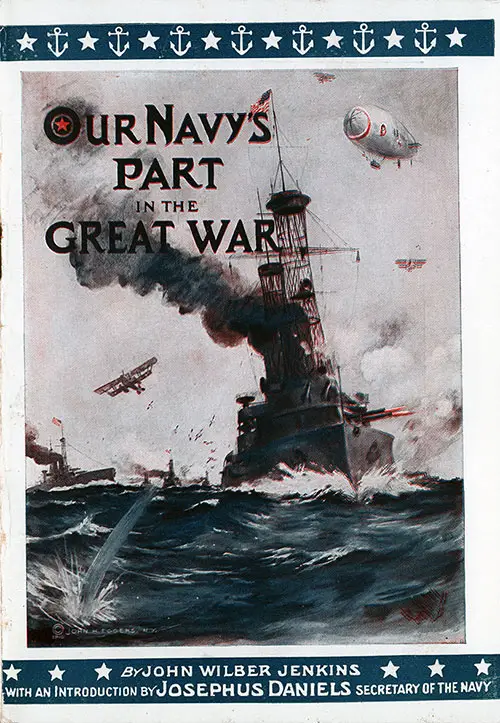
Front Cover, Our Navy's Part in the Great War by John Wilber Jenkins, 1919. GGA Image ID # 184c84ca1d
This section organizes the content based on the Booklet "Our Navy's Part in the Great War" by John Wilber Jenkins. It supplements the text with additional photographs to help tell the US Navy's story in World War 1.
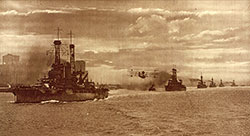
2,000 Vessels in Service When War Ended
The growth of the Navy in ships and personnel was phenomenal. When the war began, were 364 vessels on the naval list, of which 20 were listed as unserviceable for war purposes.
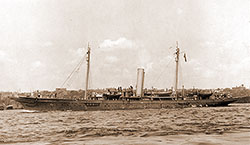
On November 5, the converted yacht Alcedo (SP 166), which had been on almost constant escort duty and had rescued 117 survivors of the Antilles when that vessel was torpedoed, was sunk by an enemy submarine while escorting a convoy from Quiberon.
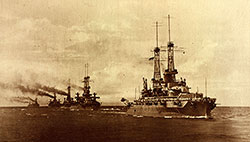
American Naval Fleet Sent Over There - 1919
Submarines had been successfully used by the British against enemy U-boats. In the autumn of 1917, American submarines were sent abroad to cooperate with the British forces.
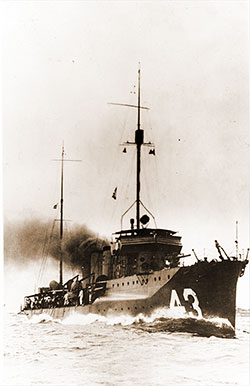
"Cassin," Hit by Torpedo, Saved by Quick Action - 1917
The USS Cassin was struck by a torpedo on 15 October 1917 but was taken to port and repaired. But one man was killed, Gunner's Mate Osmond K. Ingram, who gave his life to save the ship.
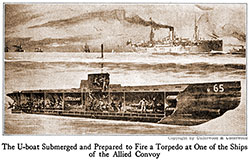
German U-Boats on American Coast - 1918
From the beginning, it was realized by the American naval authorities that Germany could at any time send her submarines across the Atlantic, and patrol vessels in home waters were constantly on the lookout for them.
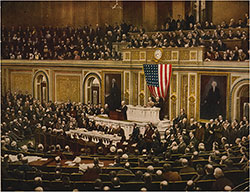
On April 6, 1917, the day President Wilson, per the resolution of Congress, declared the existence of a state of war with Germany, Secretary Daniels sent out the order for the mobilization of the Fleet.
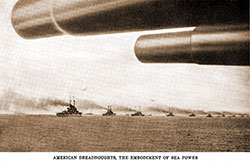
US Naval Fleet in the Great War
By January 1, 1918, there were 113 United States naval vessels across, and in October 1918, the total had reached 338 ships of all classes.
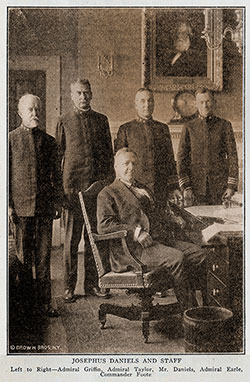
US Navy - Our First Line of Defense - 1919
The Navy was called upon to undertake many novel and untried tasks in the war. Still, whenever any new and challenging duty was imposed, the entire service responded enthusiastically, from admirals to apprentice seamen.
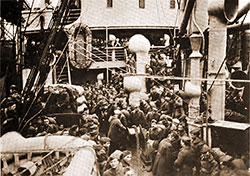
US Navy's Growth and Expansion During the Great War
The Naval Overseas Transportation Service, organized in January 1918 to carry supplies and munitions to the American forces abroad, grew in ten months to a fleet of 321 cargo-carrying ships aggregating 2,800,000 dead-weight tons.
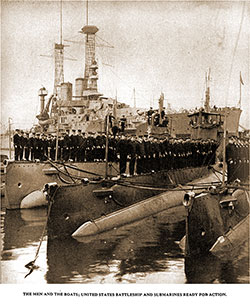
US Navy Ship Construction Program
Secretary Daniels announced in 1917 that the entire war-building program of the Navy embraced nearly a thousand ships. Most vessels authorized by the three-year program 1916 were contracted for early 1917.
